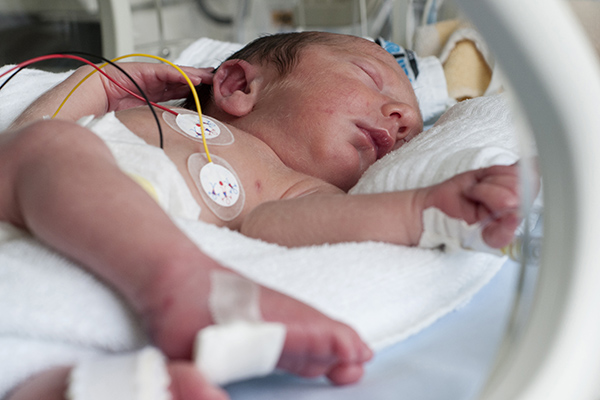High levels of fine particulate air pollutants are associated with several select congenital heart defects and the highest level of benzene links to increased prevalence of orofacial clefts, a new USF College of Public Health study found. The clinical significance of the environmental factors in the risk for birth defects requires more study, however, because several defects showed no link to these pollutants.
The COPH USF researchers used data from the Florida Birth Defects Registry and air pollution monitoring data from the U.S. Environmental Protection Agency (EPA) Air Quality System to examine how maternal exposure to air pollutants benzene and PM2.5 affects the risk of birth defects. Their study, “Associations between exposure to ambient benzene and PM2.5 during pregnancy and the risk of selected birth defects in offspring,” was published in the July issue of Environmental Research.
“Pollution is very common and at this point there isn’t a lot of knowledge on what causes birth defects,” Jean Paul Tanner, epidemiologist and statistical data analyst of the USF Birth Defects Surveillance Program, said. “We have to try and dig deep and see what some of the causes are; while we did find some associations, it’s something that needs to be looked at further.”
Tanner and principal investigator Dr. Russell Kirby of the USF Birth Defects Surveillance Program worked with worked with Dr. Amy Stuart, associate professor in the COPH Department of Environmental and Occupational Health, to examine how maternal exposure to air pollutants benzene and PM2.5 impacted risk of birth defects.
Drs. Haofei Yu and Jason Salemi, alumni of the COPH, also contributed to the study.
Individuals regularly come into contact with PM2.5, short for particulate matter less than 2.5 microns in diameter. It is a combination of particles suspended in air from pollution emitting agents such as cars, power plants, factories and natural sources, such as forest fires.
“PM2.5 is a common pollutant or criteria pollutant. It’s regulated with a level in air that is considered a maximum allowable level and those are called national ambient air quality standards,” Stuart said. “It is the number one pollutant from a health impact standpoint.”
Benzene is less common but also important to health, according to Stuart.
“Benzene is a hazardous air pollutant and it is specifically known to be substantially present in urban areas,” Stuart said. “It comes from off gassing of gasoline, and other sources, including chemical manufacturing; it is one of approximately 190 listed hazardous air pollutants the EPA lists, and of that list, it’s one of the 30 that the EPA is most concerned with in urban areas.”
The researchers obtained data from the Florida Birth Defects Registry for births taking place from 2000 to 2009 and involved critical congenital heart defects, orofacial clefts and spina bifida.
They then estimated pollutant levels affecting each birth using data from the EPA’s ambient air quality records and addresses listed on the birth certificates, to gauge the mother’s exposure to PM2.5 and benzene during pregnancy.
Results of the study indicate that higher levels of ambient PM2.5 exposure are associated with several birth defects. The highest benzene exposure level was found to be associated with increased prevalence of orofacial clefts, but also with decreased prevalence of one heart defect. However, substantial uncertainty remains regarding whether these links are clinically important because no association was found for several related defects.
“There is a lot we still don’t know and I would very much like us to get the point where there is quite a lot more that we do know,” Kirby said. “There is a thought that environmental factors play a major role in birth defects in not only directly influencing, but also possibly interacting with genes, but we don’t really know very much about it. If we were to find an association between exposure to some pollutant early in pregnancy and birth defects, we would need to do more advanced studies to see what the nature of the association is.”
Data from the study may be obtained by contacting Dr. Kirby at rkirby@health.usf.edu.
Article citation:
Tanner, J.P., Salemi, J.L., Stuart, A.L., Yu, H., Jordan, M.M., Duclos, C., Cavicchia P., Correia, J.A., Watkins, S.M., & Kirby, R.S. (2015). Associations between exposure to ambient benzene and PM2.5 during pregnancy and the risk of selected birth defects in offspring. Environmental Research, 142, 345-353.
Story by Anna Mayor, College of Public Health


